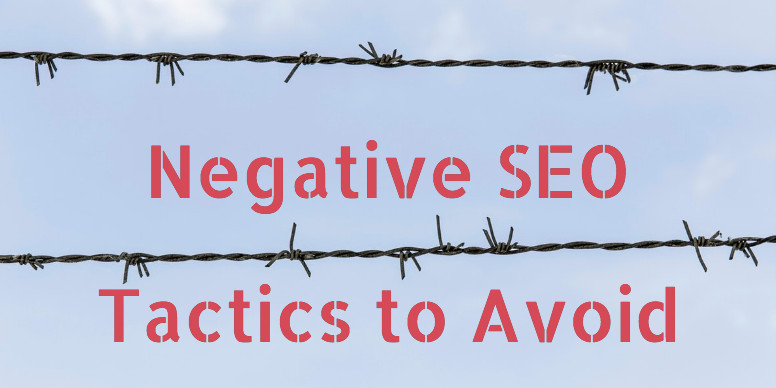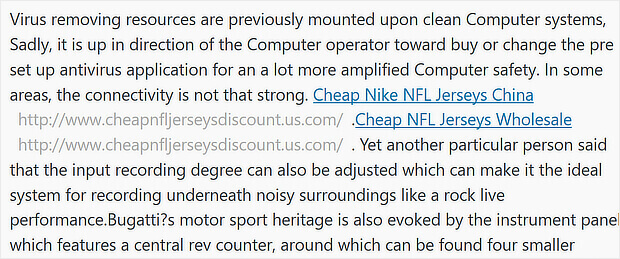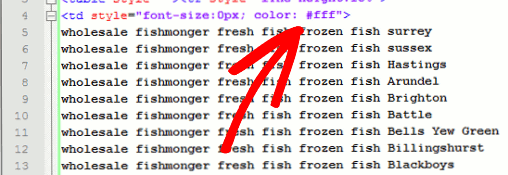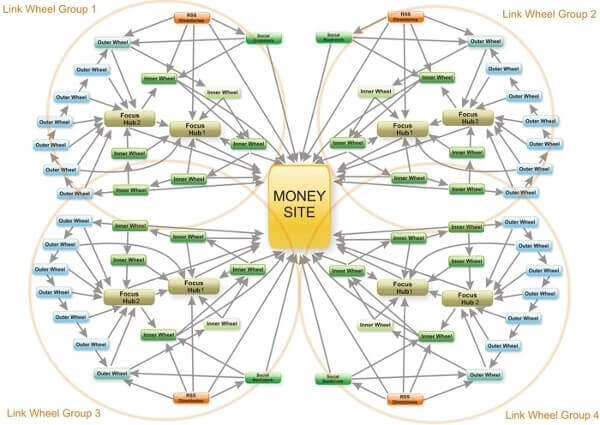Black hat SEO might give quick results if you’re lucky, but over time it’s more likely to have the opposite effect, tanking your rankings and getting you blacklisted from search results altogether.
Black hat SEO techniques are usually geared towards search bots first, rather than human readers. This strategy carries a high risk of being penalized by Google.
More seriously, using black hat SEO techniques can result in reduced search rank. In many cases when Google changes algorithms to weed out questionable SEO behavior, sites that had enjoyed page one positions can drop out of sight. Since that has an effect on authority, visibility and traffic, you want to avoid that. Fix the behavior, then submit a reconsideration request.

So, what happens when Google sees SEO behavior it doesn’t like?
Usually Google will change their algorithms so that those techniques no longer work.
Some of the most notable Google search algorithm updates have been:
- Florida, which penalized keyword stuffing
- Panda, which penalized content farms
- Penguin, which penalized certain linking practices
If you’ve noticed a sudden drop in traffic or that fewer of your web pages are appearing in search results, then those are signs of a possible penalty.
Here are the black hat SEO tactics you’ll want to avoid if you want to get traffic from Google.
Content Scraping
Content scraping is where someone grabs your RSS feed (especially if it’s a full text RSS feed) and republishes the content on their own site.
In general, the splogs (spam blogs) created this way will be optimized to cover a particular topic or keyword.
With Google penalizing this kind of content, there’s no good reason to use this black hat SEO tactic. And if you are going to syndicate your content elsewhere to build links, remember to use canonical links so Google knows where the original content is.
Keyword Stuffing
Keyword stuffing used to be a way to get your content to rank higher in search engines, by including all your chosen keywords in the content. But that made the content virtually unreadable, so it’s no surprise that Google cracked down on it. Google’s all about relevance, and using unrelated keywords, or too many of them, is likely to result in them downgrading your content. Here’s Google’s example of keyword stuffing:
We sell custom cigar humidors. Our custom cigar humidors are handmade. If you’re thinking of buying a custom cigar humidor, please contact our custom cigar humidor specialists at custom.cigar.humidors@example.com.
If your SEO firm is still telling you to create content with a high percentage of keywords, or using lists of keywords in meta descriptions, it’s time to get someone new to handle your SEO strategy, and do proper keyword research and content optimization.
Cloaking
Cloaking is the practice of showing one thing to visitors and another to search engines.
For example, your visitor might be looking at an image, while there are hidden links and text in the HTML that search engine spiders are looking at. Someone using black hat SEO could use this technique to insert keywords without the visitors’ knowledge, for example.
Google’s advice on this? Don’t do it!
Automated Comment Spam
If you run a blog, you’ve probably seen comment spam. These are automated comments that often include keywords and spammy links. Needless to say, getting inbound links from spammy comments won’t fool Google, and won’t help search ranking, so it’s a mystery why people are still doing this.

Spammy comments on forums and free hosting sites are also a no-no, says Google. The bottom line: anyone commenting to earn backlinks should make sure their comments are valuable.
On your own site, you don’t want to link to spammy sites, as this will hurt your own search ranking. Make sure your comments have the nofollow tag which tells Google you’re not passing search ranking to the target sites. That’ll stop the spammers from benefiting.
Hidden Text
Related to cloaking, another black hat SEO technique is to hide text and links, for example by changing the color so they match the page background, making the font size ultra-tiny so nobody can see it, or by linking an unnoticeable piece of punctuation.

Hidden text isn’t always a black hat SEO technique, of course. Sometimes it’s used to serve up text for screen readers for better accessibility.
Link Schemes
Any attempt to boost search engine ranking artificially is black hat SEO. One of the types of black hat SEO Google really hates is link schemes, like this one.

Google includes in this:
- Buying and selling links, including posts that contain paid links (this kind of practice will also upset the FTC unless you disclose the relationship)
- Excessive cross-linking with others as part of a link exchange
- Guest posting and article marketing with keyword-rich anchor text
- Automated link creation via a program or app
To comply with SEO best practices, avoid link schemes at all costs.
Doorway Pages
Doorway pages are pages that funnel visitors to other pages. Often, black hat SEO tactics create several of these pages with mostly similar content in an attempt to build links to a destination page. If those pages don’t offer value in their own right, then anyone using them is likely to get penalized.
Thin Affiliate Content
People who run affiliate programs often make promotional content available to affiliates. But if you publish that on your site as is, you’ll likely have thin content, without substance for readers. You’ll also duplicate content that appears on other sites.

To solve this problem as an affiliate, make sure your affiliate product site has original content, including reviews, ratings and comparisons.
“Sneaky Redirects”
Redirection is a useful way to send visitors to the right page when a resource has moved or changed on your site, or when the site as a whole is on a new domain.
Unfortunately, this technique can also be misused in black hat SEO. Google calls “sneaky redirects” situations where search engines see one thing and visitors see another, or where some users see the normal content, and others see a spam site. Just don’t do it.
Malicious Site Behavior
Sites that engage in malicious behavior will also be penalized for black hat SEO. This includes:
- Manipulating users by changing the behavior of items on the page (so they end up somewhere different from where they intended)
- Promoting or installing software that changes ad behavior
- Including unwanted software, malware, or Trojans in a software download
- Changing users’ search preferences or homepage without permission
Other black hat SEO tactics that aren’t specifically listed in Google’s guidelines, but are known to be penalized include:
- Private blog networks, where site owners use their own network of sites to pass search ranking to a single site
- Negative SEO, which means trying to get your competitors penalized by pointing lots of spammy links at their web pages
- Creating misleading rich snippets markup
____________________________________________________________________________________________
We provide the best quality backlinks as ever, pls contact us qualitybacklink.net@gmail.com ; Skype: qualitybacklink






